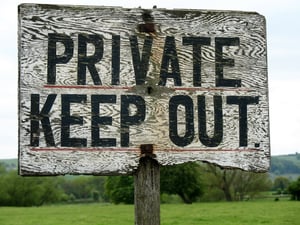 Last year I provided Seven Tips for Building Relationships with Property Owners along Your Transmission Lines, which is a topic we deal with on a consistent basis. I’ve updated that original post based on some of the responses we received. While there’s no way to guarantee a positive outcome, these simple tips can help make a positive outcome more likely. Good luck!
Last year I provided Seven Tips for Building Relationships with Property Owners along Your Transmission Lines, which is a topic we deal with on a consistent basis. I’ve updated that original post based on some of the responses we received. While there’s no way to guarantee a positive outcome, these simple tips can help make a positive outcome more likely. Good luck!
Energy projects impact many people. Whether it's surveying, designing, or constructing transmission, distribution and substation infrastructure, you’re sure to meet neighboring property owners along the way. If your experience is anything like ours, some are friendly, and some...not so much. It’s important to leave a positive impression on these important stakeholders. Like all relationships, your relationship with these neighbors is a product of a thousand small interactions.
Here are some useful tips for building relationships with property owners.
Tip #1 - Keep Good Records
Conversation records are the most effective way to ensure that agreements are documented and mutually understood. All conversations should be recorded to make sure you remain informed of discussions held on your behalf with property owners. These records also serve as documentation of notices given to property owners.
Tip #2 - Do Your Homework
Don’t leave the office without doing your homework first. Make sure you know what the property owners’ concerns may be before you meet with them. Reach out to the survey, realty and operations / maintenance staff before entering the field. They can help you to understand property owner concerns as well as how to navigate potential land mine discussions. These experts will also provide guidance as to any advance notice requirements that may exist with certain property owners. The legal requirements for right of entry vary by state. When dealing with right of entry for properties with an easement, it will vary from property to property.
Tip #3 - Common Courtesies Create Fans
Always take the opportunity to stop and say Hello. Property owner relationships are like any other relationship. Success is measured in years and is a product of regular cultivation and nurturing.
Tip #4 - A Little Signage Goes a Long Way
Clearly marked vehicles identify who you represent. Not only is this appropriate, it also lends to your credibility. Think for a moment what it would be like for a stranger to approach you and discuss nearby transmission lines. Be sure to bring business cards with a phone number or your company security badge so stakeholders can call with further questions.
Tip #5 - Respect Boundaries
Always educate yourself on the most appropriate method of access before entering the field (see Tip #2: Do Your Homework). Never take shortcuts and always respect personal property.
Tip #6 - Access Gates Are a Big Deal
Gates are established for a reason. Leave them as you found them - whether it's open or closed, locked or unlocked. Not doing so can cause huge headaches. To name a few: letting an unauthorized person on private property who causes damage, locking someone in, locking someone out, or allowing animals to escape from their field.
Tip #7 - Plan Ahead and Ask for Backup
Ask for backup when challenging landowners are expected to visit the project. You may need to bring other members of your team from realty, environmental, or engineering who are uniquely prepared to resolve concerns and act for the client.
Developing relationships requires a genuine interest and a willingness to listen.
Project success shouldn't be measured simply on the technical aspect of building, improving and modifying transmission lines. Project success must also reflect property owner interactions and the relationships built via those interactions.
Do you have any tips to add to this list? If so, let me know via the comment box below or via email at zmartin@mackaysposito.com.

